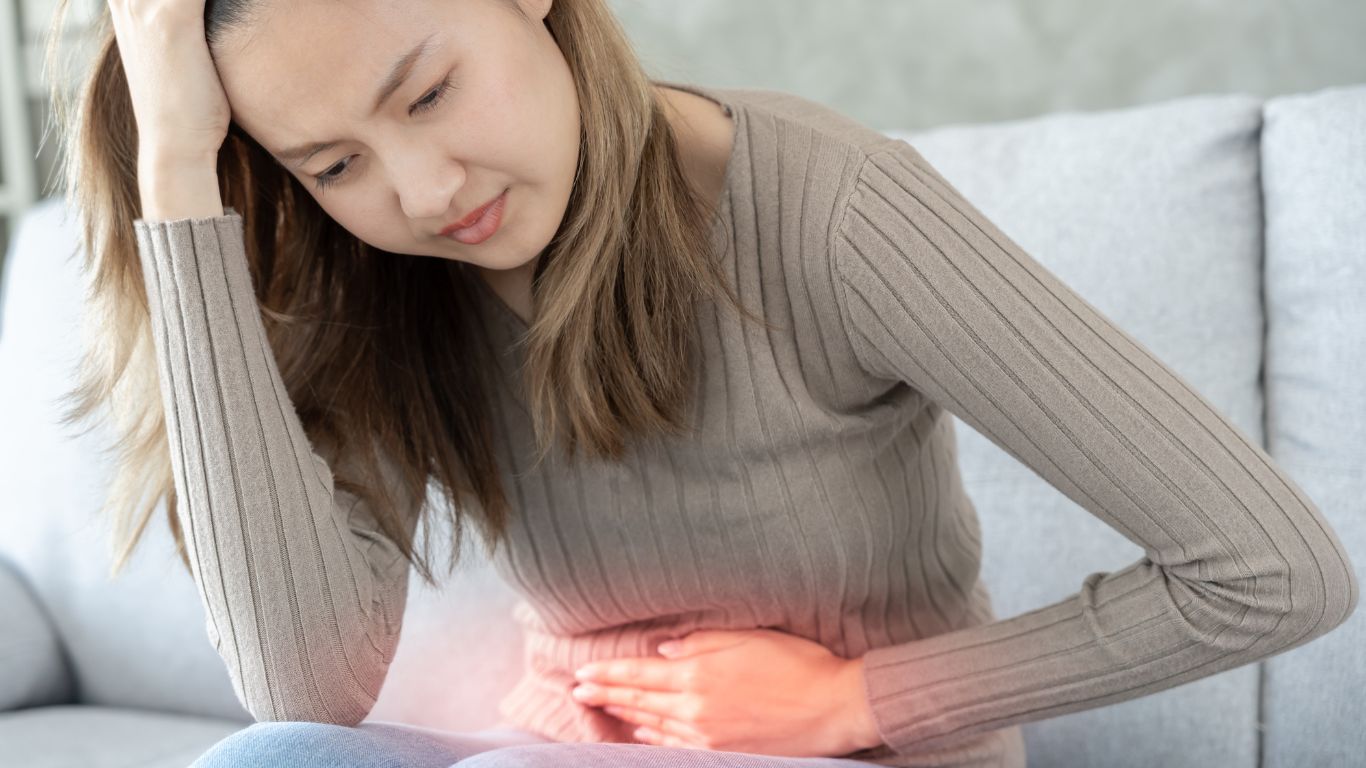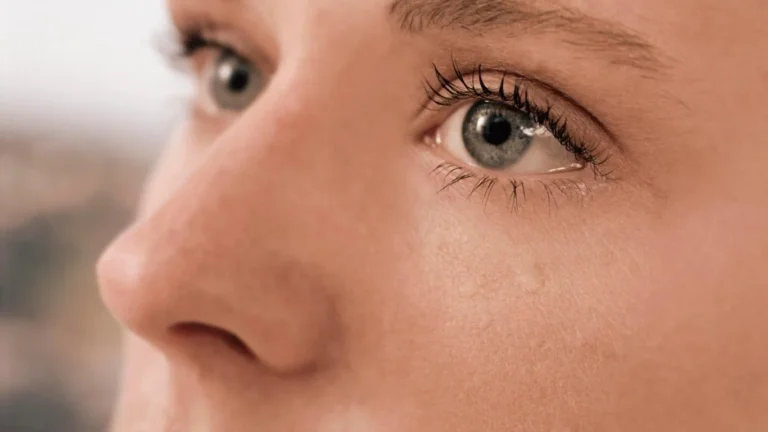GERD and Chest Tightness: Proven Relief Strategies That Actually Work
When I first started working as a Medical Assistant in a Gastroenterology clinic, I never imagined how often I’d hear patients talk about this weird combo: GERD and chest tightness. At first, I assumed chest tightness always meant something heart-related. I mean, that’s what most people think, right? But over the years, I’ve come to learn just how often GERD is the sneaky culprit behind that pressure or squeezing feeling in the chest. And let me tell you—patients are constantly surprised when we suggest acid reflux might be the cause. If you’re reading this, chances are you’re feeling confused, maybe a little freaked out, and looking for some real answers (not just generic ones). You’re in the right place.
What Exactly Is GERD, and Why the Heck Does It Mess With Your Chest?

So, GERD stands for Gastroesophageal Reflux Disease. It’s not just occasional heartburn after a spicy taco night—it’s when acid reflux becomes a chronic, sometimes daily, issue. Think of it like this: your stomach acid is supposed to stay in your stomach (obviously), but with GERD, that acid keeps creeping back up into your esophagus. Not only is that super irritating, but it also creates symptoms that go way beyond basic heartburn.
One of the big curveballs GERD throws at people is chest tightness. And no, it’s not your imagination. That tight, heavy, or even sharp sensation in the chest can genuinely feel like something much more serious. I’ve had so many patients come in thinking they were having a heart attack—understandably so—only to find out it was GERD all along. Crazy, right?
How GERD Mimics Heart Trouble (and When You Should Worry)
Let’s get real for a second. Chest symptoms are scary. Full stop. Nobody wants to mess around when it comes to their heart. But here’s what I’ve seen working alongside GI docs for years: GERD-related chest tightness often shows up as a slow-building pressure in the middle of the chest, especially after eating. Some folks describe it as a “band around the chest” or “like something heavy just sitting there.” Sound familiar?
Still, there’s a fine line between GERD and more dangerous stuff like angina. So here’s what I tell my patients:
- If it happens after meals, especially large or fatty ones, GERD might be to blame.
- If it gets worse when you lie down, again, reflux is a likely suspect.
- If antacids help even a little, that’s another hint it could be GERD.
But—big but here—if the chest pain is crushing, radiates to your arm or jaw, or comes with shortness of breath, dizziness, or sweating, stop reading and call 911. Better safe than sorry.
Why Some People Are More Prone to GERD and Chest Tightness

Not everyone with GERD gets that scary tight-chest feeling. But over time, I’ve noticed certain patterns among patients. Some bodies are just more reactive. Here’s what might put someone in the “more likely” category:
- Hiatal hernia: A condition where part of the stomach pushes into the chest area, making reflux more common.
- Obesity: More pressure on the abdomen = more acid getting pushed up.
- Smoking: Weakens the lower esophageal sphincter (the muscle that’s supposed to keep acid where it belongs).
- Medications: Certain prescriptions—like some for asthma, anxiety, or blood pressure—can relax that sphincter too.
And of course, stress is a wild card. We’ve seen patients whose GERD flares up during life’s rough patches—divorce, job loss, even the holidays. Stress doesn’t cause GERD directly, but it sure doesn’t help.
Everyday Triggers I’ve Seen Over and Over in Clinic

Over time, I started picking up on what I now call “the usual suspects”—foods and habits that seem innocent but love to kick GERD into high gear. Patients would come in again and again with the same culprits.
- Big portions, especially at dinner
- Late-night snacks (your stomach needs a bedtime, too!)
- Acidic drinks like coffee, soda, orange juice
- Greasy, fried, or super-fatty foods
- Alcohol—especially wine and beer
- Mint (surprisingly common trigger)
What blew my mind is how personal triggers can be. One woman’s trigger might be garlic bread, while someone else can eat it with zero issues. It’s all about tuning in to your body—and keeping a food journal can seriously help. I’ve had more than a few patients discover a major pattern that way.
How We Diagnose GERD (and Rule Out the Scary Stuff)

One thing I always try to reassure patients about is the process—there’s a method to the madness when it comes to diagnosing GERD. And if chest tightness is part of the picture, we’re definitely going to dig deeper just to be sure we’re not dealing with a cardiac issue. I’ve sat in on more EKGs and stress tests than I can count, just to be safe.
Here’s a quick breakdown of what the diagnostic journey usually looks like:
- Detailed symptom history – Honestly, this is where we get the most insight. We ask about meal patterns, when the symptoms strike, any sleep disruption, etc.
- Trial of medication – Sometimes, the GI doc will start patients on a proton pump inhibitor (PPI) like omeprazole to see if symptoms improve. If chest tightness eases up, it’s a huge clue.
- Endoscopy – For folks who don’t respond to meds, or if there’s concern about complications, we’ll schedule an upper endoscopy to look directly at the esophagus and stomach.
- pH monitoring – This test actually tracks how much acid is flowing into the esophagus over 24 hours. Super helpful, especially for folks who don’t have the “classic” GERD symptoms.
And yep, heart-related causes are always ruled out first. Nobody on our team messes around when it comes to chest pressure or pain. If there’s even a sliver of doubt, we coordinate with cardiology right away.
Let’s Talk Treatment: It’s Not Just About the Meds

Here’s the deal: GERD and chest tightness don’t have to take over your life. But fixing it isn’t always as simple as popping a pill. Sure, meds help—PPIs and H2 blockers (like famotidine) can do wonders—but long-term relief usually comes down to a lifestyle overhaul. I’ve seen patients make small, consistent changes and get huge results.
What Actually Helps (and What Doesn’t)
After years of hearing real feedback from patients, I’ve picked up a solid list of what tends to work versus what’s just hype:
- Elevating the head of the bed – Not just an extra pillow. We’re talking blocks under the bed frame to create a 6–8 inch incline. Sounds weird, but seriously effective.
- Meal timing – Late dinners are GERD’s best friend. We tell patients to aim for dinner at least 3 hours before bedtime.
- Weight loss (if needed) – Just 10–15 pounds can make a big difference. Less abdominal pressure means less reflux.
- Cutting out “trigger” foods – Again, it’s personal. But spicy, acidic, and fatty foods top the list for most people.
- Mindful eating – Slowing down, chewing thoroughly, and not overeating can all reduce reflux episodes. Plus, it’s good for digestion in general.
And just between us? I’ve seen people go down some wild internet rabbit holes trying supplements, detoxes, and other stuff that just doesn’t pan out. So here’s my tip—stick to what’s evidence-backed and makes sense for your lifestyle. You don’t have to go extreme to get better.
Real Talk: When GERD Gets Complicated

Here’s something not everyone talks about—GERD isn’t always just annoying. If it sticks around long enough without proper management, it can actually lead to some pretty serious stuff. We’re talking chronic inflammation, damage to the esophagus, and in some cases, conditions like Barrett’s esophagus, which increases the risk for esophageal cancer.
Now, I don’t say that to scare anyone. But it’s why I push follow-up care so hard in clinic. I’ve seen patients try to tough it out or just keep refilling the same meds for years without ever checking back in. And that’s when silent damage can creep in.
Signs It’s Time to See a Specialist (Like, Yesterday)
- Unexplained weight loss
- Difficulty swallowing or food feeling “stuck”
- Black, tarry stools (possible sign of bleeding)
- Persistent vomiting or nausea
- Symptoms not improving after a month of treatment
If any of that sounds familiar, do not wait. Schedule with a gastroenterologist. So many of these issues are treatable—especially if we catch them early. I’ve personally helped walk patients through the process, from their first scope to their final follow-up, and I’ve seen so many of them bounce back stronger than ever.
How Mental Health Ties Into GERD and Chest Tightness
Okay, let’s talk stress. It’s that one piece of the puzzle that often gets overlooked. But if I had a dollar for every time a patient’s reflux flared up during a stressful life event, I could probably retire early.
Here’s what happens: anxiety and stress don’t cause GERD, but they do ramp up the symptoms. Your body goes into fight-or-flight mode, digestion slows down, and acid hangs around longer than it should. Some people even develop a hypersensitive esophagus, where even small amounts of reflux cause big sensations—like that chest tightness we keep talking about.
That’s why part of my patient education usually includes mental health support. Whether it’s therapy, journaling, exercise, or just carving out some downtime, managing stress can actually make GERD treatment more effective. It’s all connected.
Long-Term Strategies for Managing GERD and Chest Tightness

So, you’ve tackled the initial flare-ups and are feeling better—awesome! But what about keeping those pesky GERD symptoms, especially that chest tightness, at bay for the long haul? From my time in the gastro clinic, I’ve seen that consistency is the secret sauce. It’s not just about reacting to symptoms; it’s about proactive management.
Embrace a GERD-Friendly Diet
Let’s talk food. Certain eats can be your allies, while others might be foes. Here’s what I’ve observed:
- Whole grains: Think oatmeal, brown rice, and whole wheat bread. They’re filling and less likely to trigger reflux.
- Lean proteins: Grilled chicken, turkey, tofu, and fish are great choices. They’re easier on the stomach compared to fatty cuts of meat.
- Non-citrus fruits and veggies: Bananas, melons, apples, carrots, and broccoli are generally safe bets.
- Healthy fats: Incorporate avocados, nuts, and olive oil in moderation.
On the flip side, it’s wise to limit or avoid:
- Spicy foods: They can irritate the esophagus lining.
- Acidic foods: Citrus fruits, tomatoes, and vinegar-based dressings might be problematic.
- Carbonated beverages: They can increase stomach pressure, leading to reflux.
- Chocolate and caffeine: Both can relax the lower esophageal sphincter, making reflux more likely.
Remember, everyone’s triggers can be different. Keeping a food diary can help identify what works for you.
Maintain a Healthy Lifestyle
Beyond diet, certain lifestyle habits can make a significant difference:
- Eat smaller, more frequent meals: Large meals can overfill the stomach and increase reflux risk.
- Avoid lying down after eating: Wait at least 2-3 hours before reclining to allow digestion.
- Elevate the head of your bed: Raising it by 6-8 inches can prevent nighttime symptoms.
- Wear loose-fitting clothes: Tight garments can put pressure on your abdomen.
- Manage stress: Techniques like meditation, yoga, or deep breathing can help reduce symptoms.
In my experience, patients who adopt these habits consistently often report fewer and less severe symptoms.
When to Consider Medical Interventions

Sometimes, lifestyle changes might not be enough. If symptoms persist, it’s essential to consult with a healthcare provider. They might recommend:
- Proton pump inhibitors (PPIs): These reduce stomach acid production and are often effective for GERD management.
- H2 blockers: Another class of medications that decrease acid production.
- Antacids: For quick relief, though not suitable for long-term use.
- Surgical options: In severe cases, procedures like fundoplication might be considered.
Always discuss the benefits and potential side effects of treatments with your doctor. Personalized care is key.
Final Thoughts
Living with GERD and chest tightness can be challenging, but with the right strategies, many find significant relief. From dietary adjustments to lifestyle changes and medical interventions, there’s a range of options to explore. Remember, it’s about finding what works best for you and staying consistent. And always consult with healthcare professionals when in doubt.
References
- Mayo Clinic: GERD Diagnosis and Treatment
- Johns Hopkins Medicine: GERD Diet
- Cleveland Clinic: Acid Reflux & GERD
- GERDHelp: Lifestyle Modifications
Disclaimer
This article is for informational purposes only and does not substitute professional medical advice. Always consult with your healthcare provider regarding any medical concerns or before making changes to your treatment plan.

Camellia Wulansari is a dedicated Medical Assistant at a local clinic and a passionate health writer at Healthusias.com. With years of hands-on experience in patient care and a deep interest in preventive medicine, she bridges the gap between clinical knowledge and accessible health information. Camellia specializes in writing about digestive health, chronic conditions like GERD and hypertension, respiratory issues, and autoimmune diseases, aiming to empower readers with practical, easy-to-understand insights. When she’s not assisting patients or writing, you’ll find her enjoying quiet mornings with coffee and a medical journal in hand—or jamming to her favorite metal band, Lamb of God.






